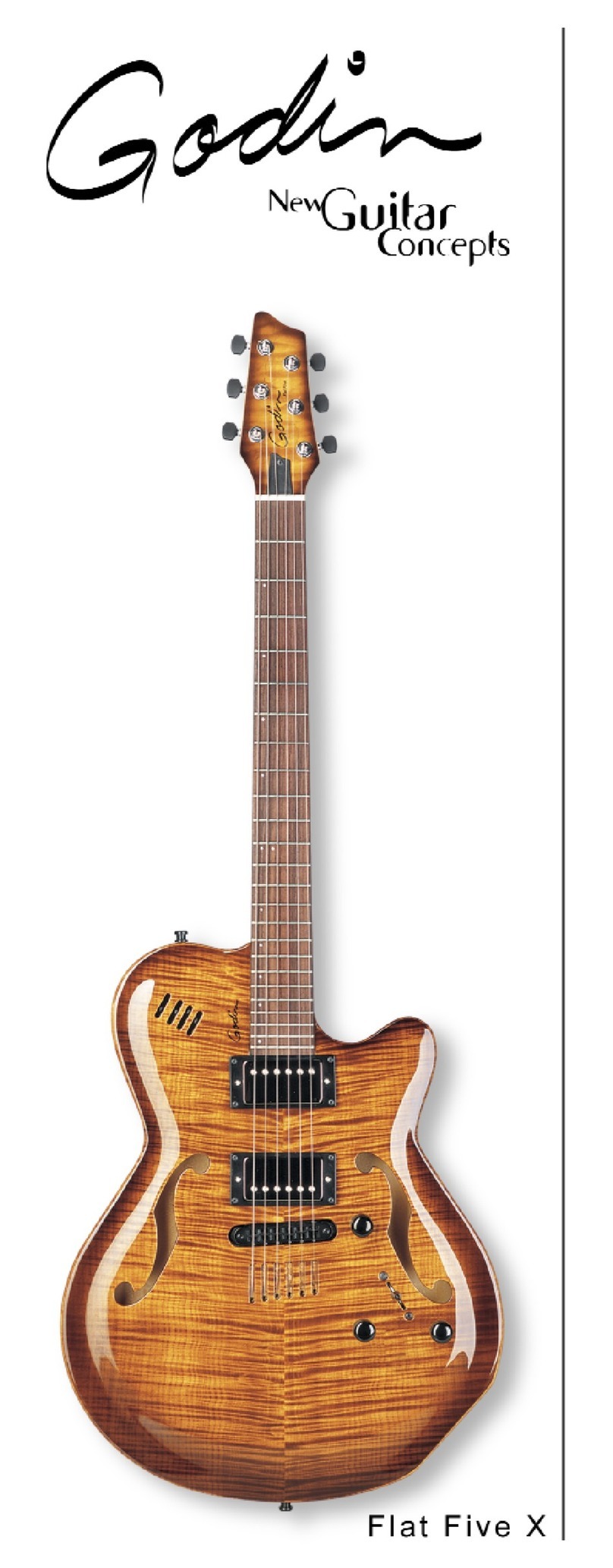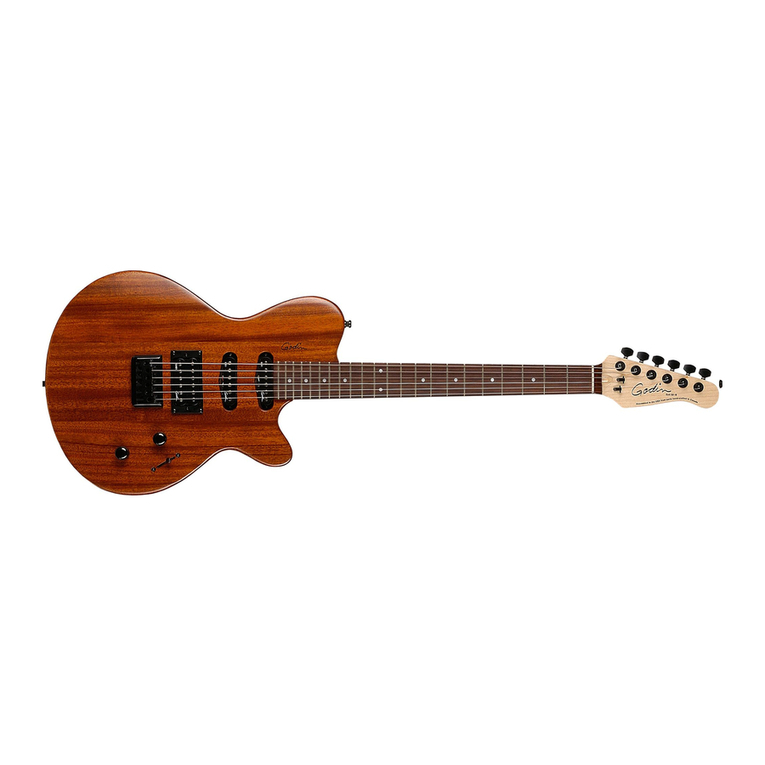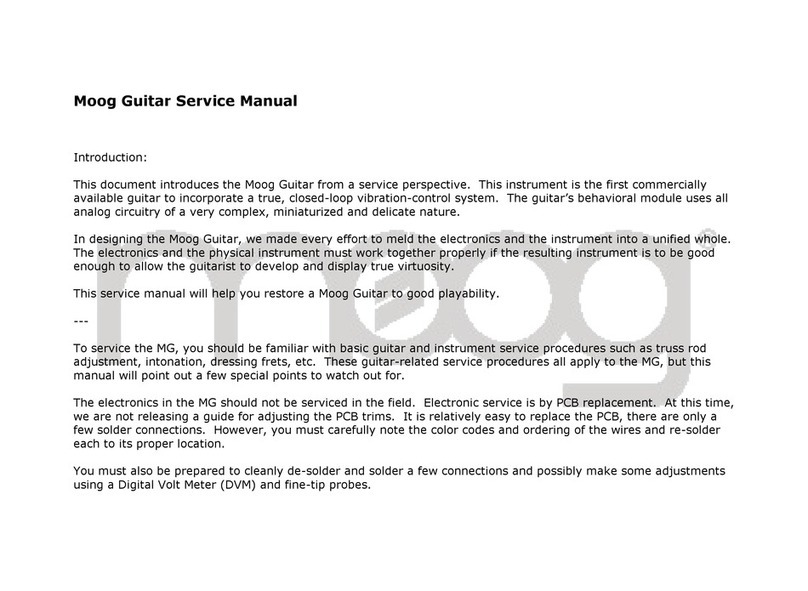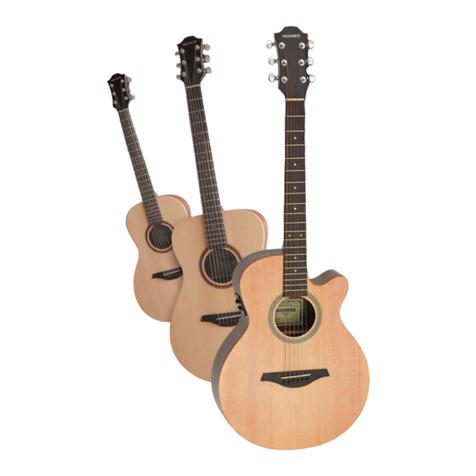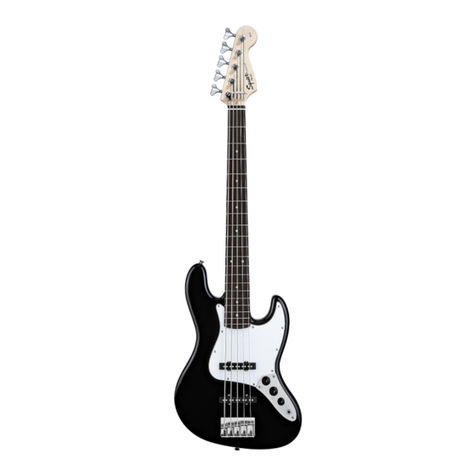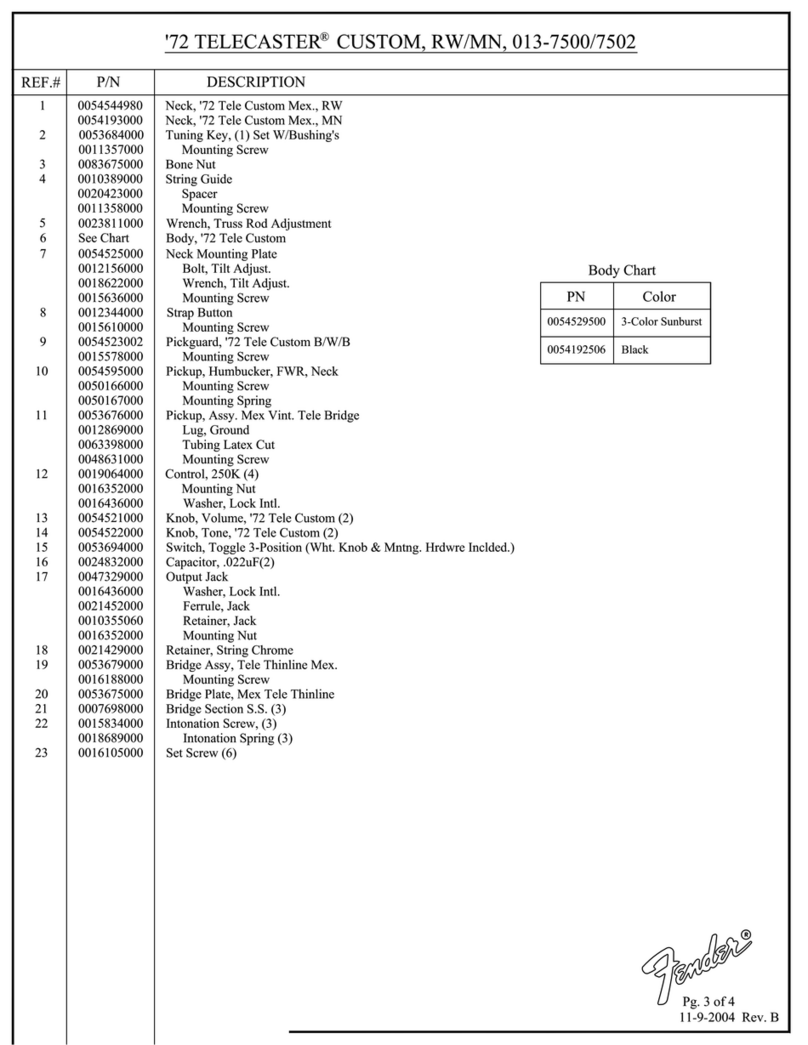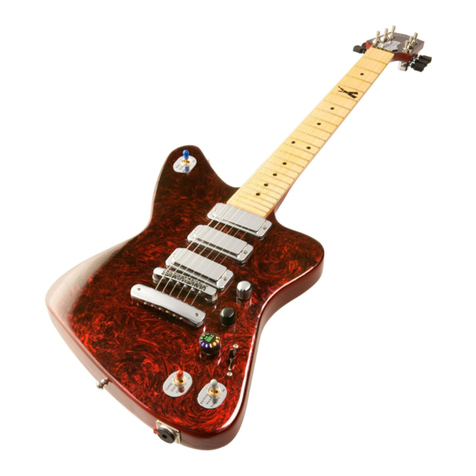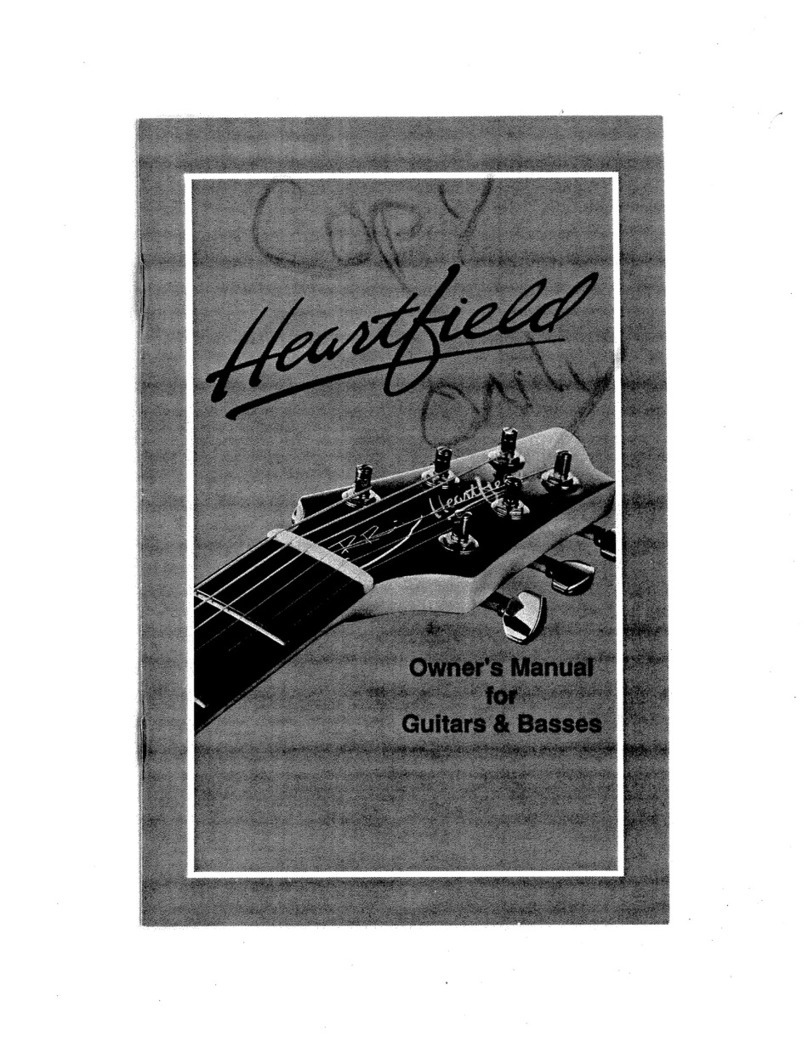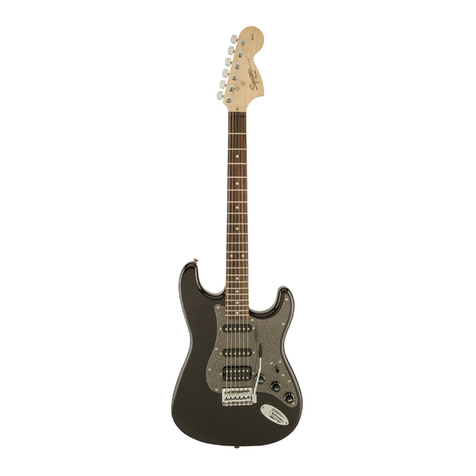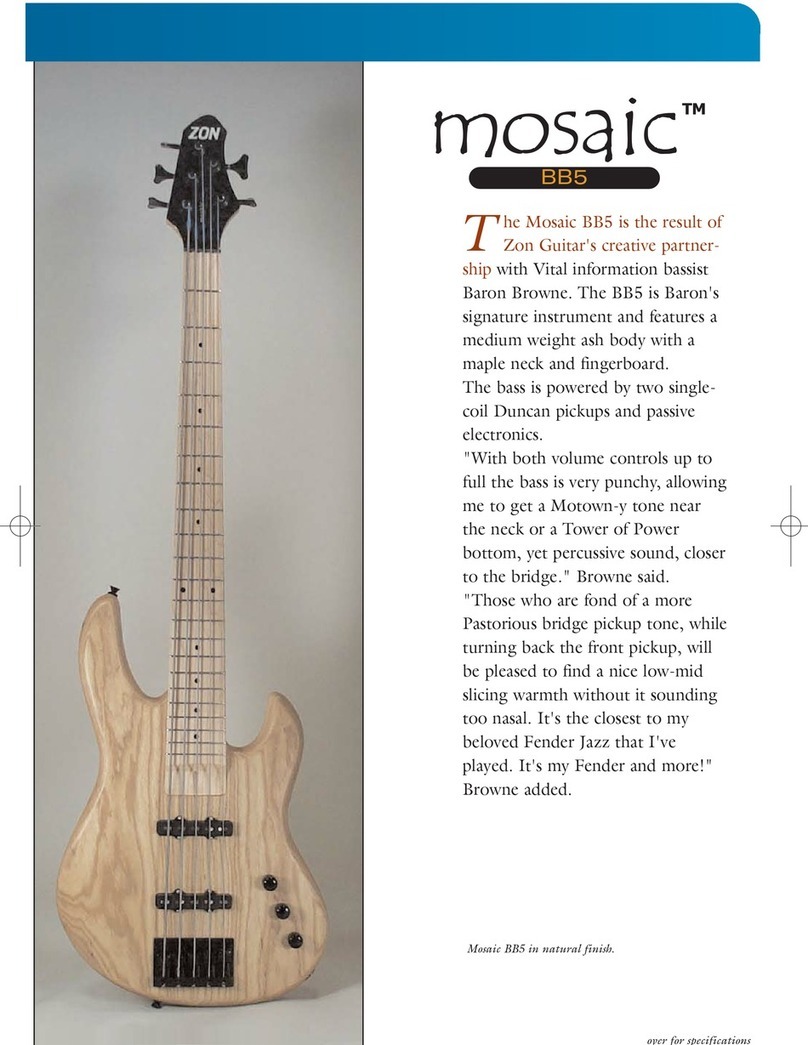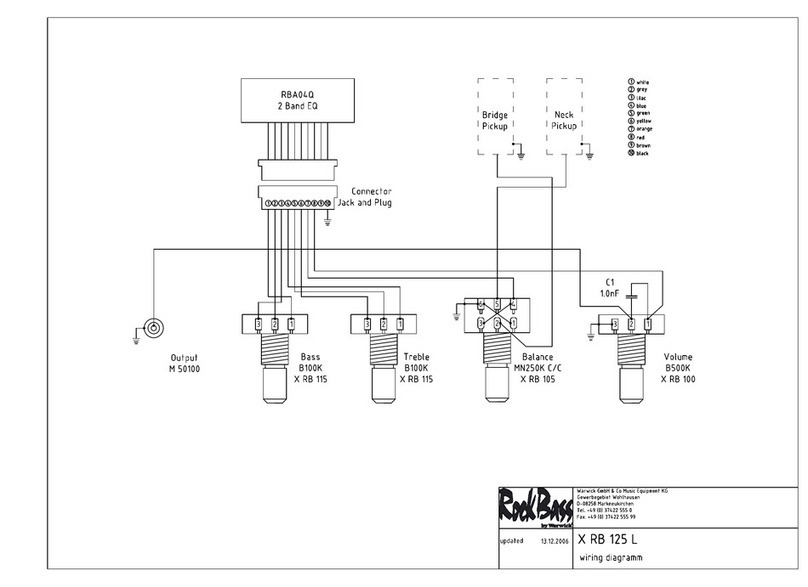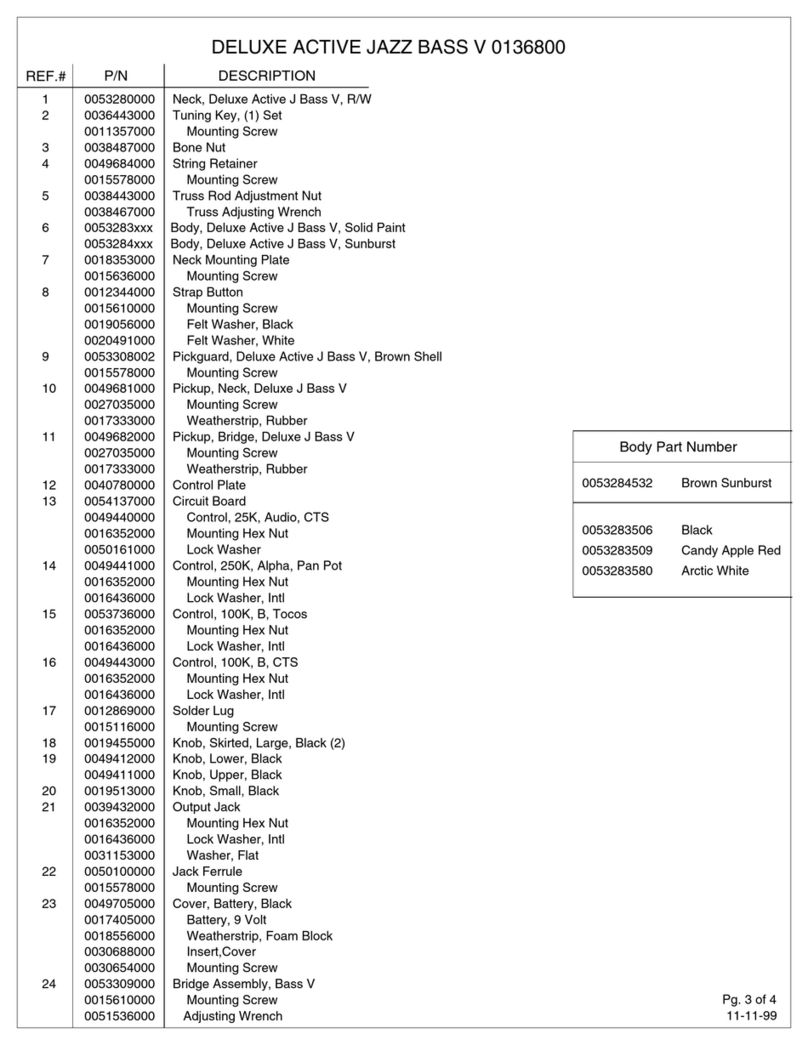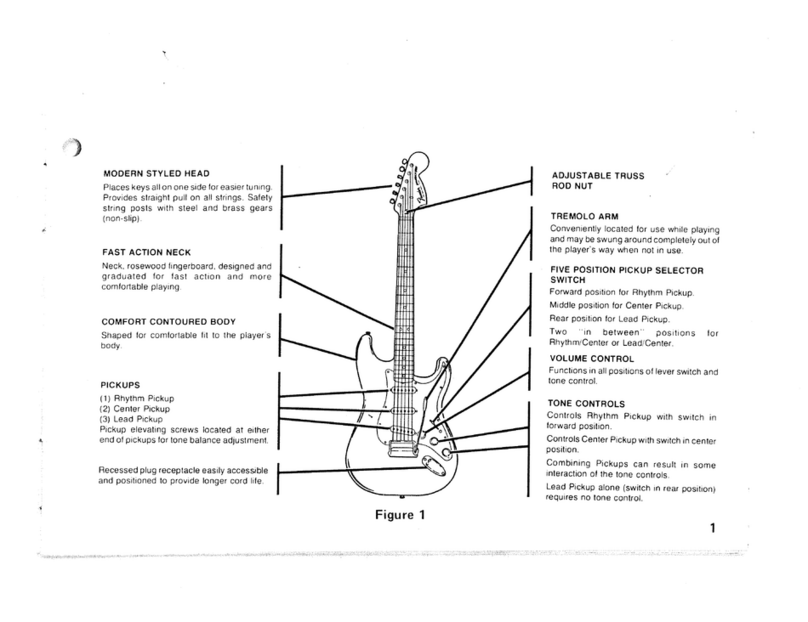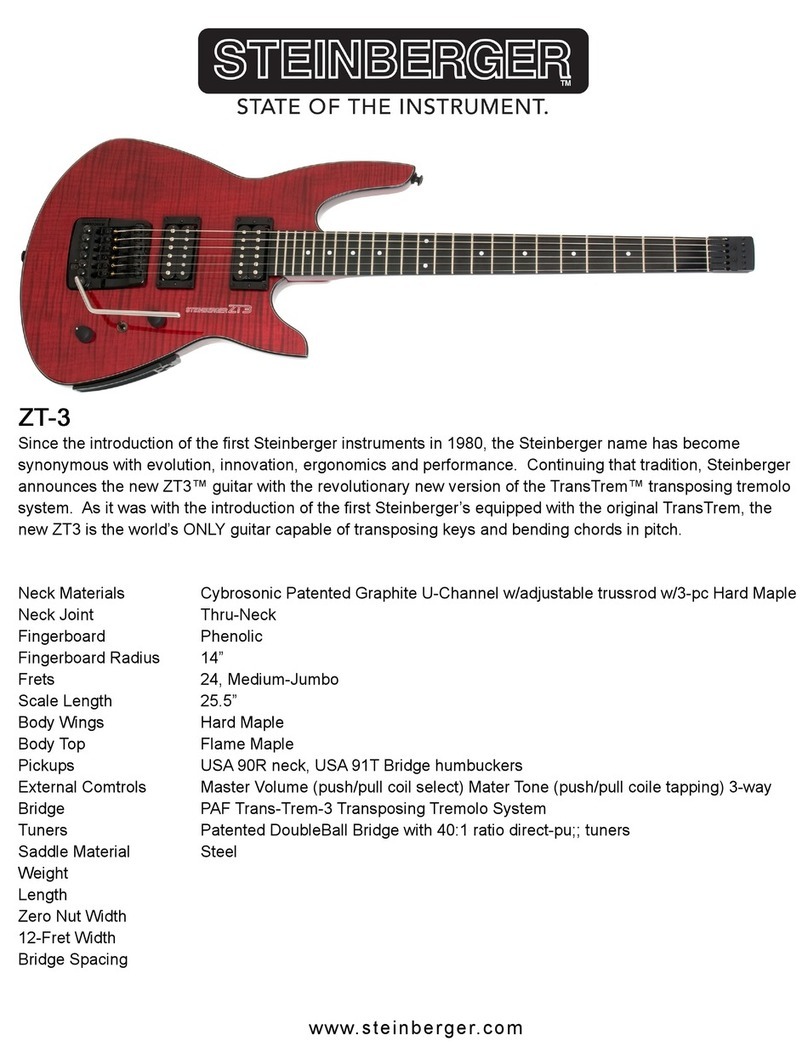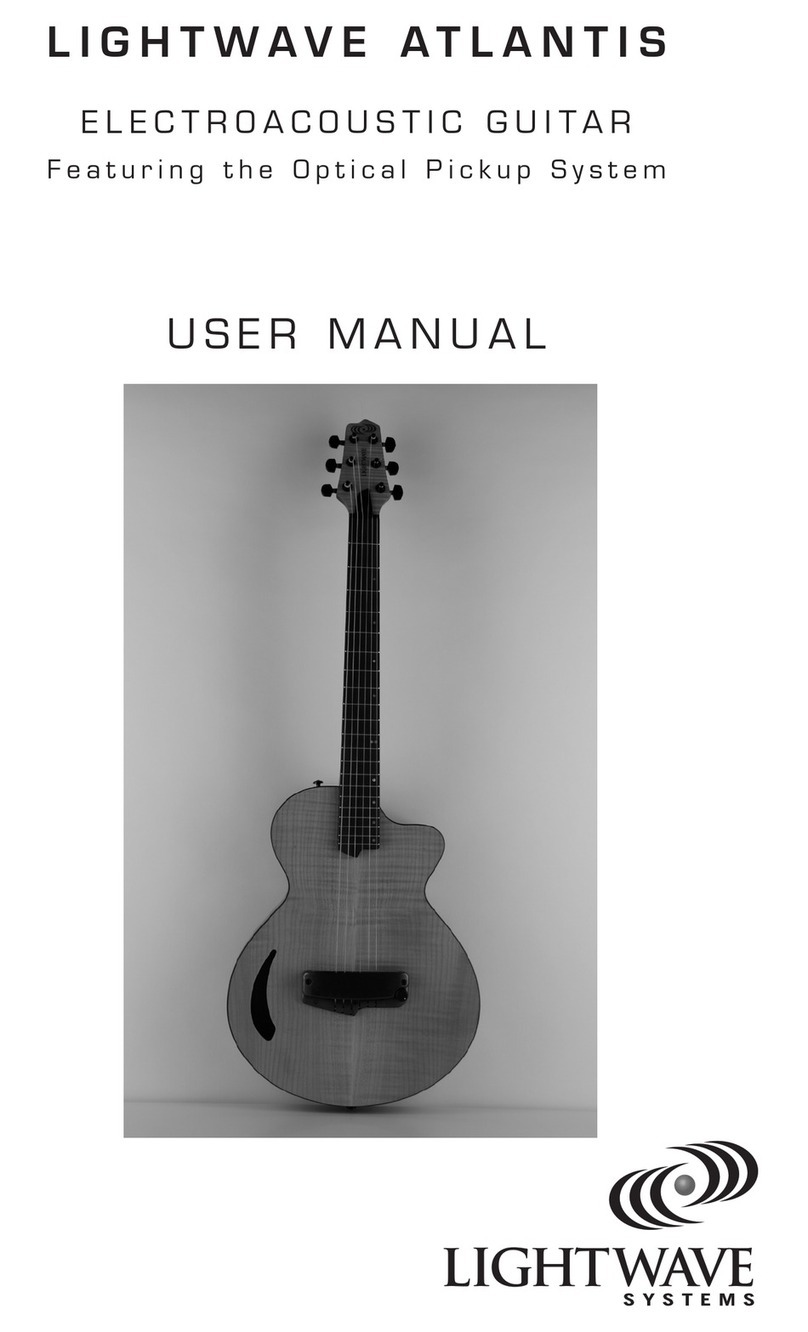Godin XTSA User manual


Congratulations and thank you for choosing a Godin guitar. Each
Godin guitar is meticulously crafted from the finest materials to pro-
vide you with an instrument worthy of a lifetime of music making.
Our goal with each Godin guitar is to find the perfect balance
between the finest traditions of guitar crafting, the new design con-
cepts that we are developing, and the integration of the latest devel-
opments in related electronics. From the selection of the wood to the
final adjustments to the finished instrument, each Godin
guitar is designed and built by people who love guitars.
Enjoy your new guitar.
The xtSA is a multi-voice guitar. A jack-of-all-trades and master of all of
them, the xtSA's incredible sound power begins with three distinct voices:
electric guitar, acoustic guitar and synth controller.
Electric guitar tones
The xtSA produces its electric sounds with help from the Godin humbuck-
er-single-humbucker pickup configuration. A special 5-way switch setup
makes it possible to get extra meaty humbucker tones and glassy split-
coil sounds.
Robert Godin
Diagram 1

To run through the electric sounds in the xtSA, use a standard guitar cord
to connect output #2 (see diagram 3) to your guitar amp. Note: always
remember to complete all connections before you turn your amp on. Turn
the volume and tone knobs all the way up (clockwise) and follow diagram
2 to sample each of the pickup combinations using the five-way switch.
Acoustic Transducers and Preamp
Each bridge saddle on the xtSA is actually a sophisticated transducer.
The signal from the six saddle transducers runs through an onboard pre-
amp with a three-way graphic EQ. The four sliders on the xtSA's upper
bout are the controls for the acoustic preamp. The top slider controls vol-
ume—pushed all the way in the direction of the neck produces maximum
volume. Treble, midrange and bass (EQ) responses are controlled by the
remaining three sliders. The EQ sliders provide boost and cut control for
each of the three frequencies. In the center position, the sliders are off.
Pushing the slider forward boosts the signal and pulling back cuts the sig-
nal. As a general rule, it's a good idea to start with the EQ sliders in the
center (off) position and make adjustments from there.
Note: Generally speaking a slight dip in the mid-range frequencies will
produce a more "acoustic" sound. Try setting the EQ with a slight dip in
the mid slider to achieve this.
Changing the battery
The active electronics for the bridge transducer system are powered by a
single 9-volt battery accessible via a small compartment on the back of
the guitar. The preamp is activated when you plug the guitar in. Therefore,
to avoid draining the battery please make sure to unplug your jacks when
the guitar will not be used for a long period of time. If the sound of the
bridge transducers starts to sound thin and fuzzy you are overdue for a
battery change. Battery life is approximately 300 hours.
Outputs
A look at the bottom of the xtSA reveals three outputs: two ¼" outputs and
a 13-pin connector. Output #1—closest to the strap pin—is a dual func-
tion jack that works as a mix output, blending acoustic and electric
sounds. Separate volume controls along with a blend control make it
easy to mix the two signals. Output #2 carries the signal from the mag-
netic pickups (electric sounds). When a cable is plugged into output #2
the electric pickup signal is removed from the mix output so that there is
now a separate signal for each of the pickup systems.
Output #1 : Mix/Acoustic Guitar
When using just one cable, the signals from both pickup systems are fed
through the Mix/Acoustic output jack (output #1). The level for the
acoustic signal is controlled by the slider in the upper bout. The level for
the electric sound is adjusted using the guitar volume knob next to the 5-
way switch (see diagram 1).
Output #2 : Electric Guitar
When two cables are used in outputs 1 and 2, the signals are completely
separated. This feature allows you to run the electric sounds into a guitar
Diagram 2
Diagram 3

amp and the acoustic sounds into an acoustic amp or directly into a mixer
channel. This is the xtSA at its best because you get the full potential of
both acoustic and electric voices as well as the possibilities of stereo
effects.
Tip: We highly recommend running the acoustic transducer output jack to
a volume pedal. You can then keep the guitar's acoustic transducer vol-
ume on at all times and control the output with the volume pedal.
Another option is to use the acoustic tone along with the regular magnetic
pickups to create one huge sound. For example: dial up a warm, jazzy
sound from the neck position humbucker and apply a small amount of the
signal from the bridge transducers to add definition or sparkle to the
sound.
Output #3 : 13-Pin Connection
As with all of Godin synth-access instruments, a built-in 13-pin connector
provides direct access to various devices. The 13-pin connector provides
hexaphonic output. Hexaphonic is the term used to describe a system
that sends a separate signal for each string. The hexaphonic signal from
the 13-pin connector provides direct access to Roland GR-Series synths,
the GI-20 interface and the various V guitar products that Roland has
developed around the same 13-pin interface.
Used on its own, the 13-pin cable carries all three signals: magnetic pick-
ups, bridge transducers and the hexaphonic signal for the synth. All of
which are then output from the stereo outputs of your GR-Series synth.
*Note: the 13-pin cable is provided with the Roland GR synth or interface.
Onboard Controls for the 13-pin Connection
There are three controls on the guitar that pertain to the 13-pin connec-
tion:
The synth volume knob controls the volume of the synth.
The momentary switch doubles the functions of the S1 and S2 buttons on
Roland's GK pickup. This switch can be assigned to access the tuner,
wah pedal and for changing programs on the synth. Please see your
Roland manual for more information on the S1/S2 buttons.
The third control is a 3-way toggle switch that selects between position 1:
acoustic & electric, position 2: synth, acoustic & electric, position 3: just
synth. Note: the 3-way toggle applies to the signals carried by the 13-pin
connector, but will not affect the guitar signal when the guitar is plugged
directly from the regular guitar output jack.
Tip: Many guitar players prefer to run their guitar sound directly into an
amp or effects device. You can remove the guitar signal from the stereo
output of the GR-Synth by running a guitar cord from the Guitar Out jack
into GR directly to your guitar amp. If you prefer to plug in to your amp
directly from the guitar, you can eliminate the guitar signal from the stereo
output of the GR by inserting a spare cord—or dummy jack—into the
Guitar Out jack in the back of the Roland device.
3 Cords - 3 Outputs
You can use all three outputs to carry out a dedicated signal into three dif-
ferent channels or amp sources (see diagram 5). The same on-board con-
figuration as the previous page applies in this situation as well.
Diagram 4

Care and Maintenance
The xtSA neck is reinforced by a double-action truss rod system. The
truss rod provides for easy adjustment when the neck reacts to changes
in relative humidity. Truss rod adjustments should only be made by a qual-
ified guitar technician. To avoid drying out your fingerboard, apply lemon
oil on a soft cloth and then to your fingerboard. Allow the oil to soak in for
a few minutes before removing the excess. This should be done with the
strings removed and at least once every year. The easiest way to keep
your guitar clean is by simply using a polishing cloth without using any
polishes at all. However if you are going to use a polish, please use a
non-abrasive, non-wax based polish. Apply the polish on a cloth first. Do
not spray it directly on to the guitar. After you have polished the area you
are working on, turn the cloth over to a 'dry' side and remove any excess
residue.
Wood reacts to changes in humidity. Too much dryness or moisture in the
air can have a negative affect on your guitar. If your guitar is exposed to
extreme temperature changes do not open your case without first allowing
the temperature in the case to slowly return to normal. This will help pre-
vent finish checking.
Additional information
Tuners
The xtSA features front-loaded lock-
ing tuners for easy string change
and better intonation. Simply turn
the locking tuner counter clock-wise
to loosen, insert string, tighten the
locking tuner by turning clock-wise
and you're ready to tune.
Specs:
Top nut: Tusq by Graphtech
Nut width: 1 11/16"
Scale: 25 ½ "
Radius: 16"
Tuners: High ratio Godin locking tuners
String gauge: Godin E-10 Nickel electric strings 10-46
Frets: Medium Jumbo Nickel
Magnetic Pickups: 2 Godin humbuckers and 1 Godin single coil pickup
Bridge transducers and preamp: RMC custom Poly-Drive system.
Body: Silver leaf maple center with white poplar wings covered in a Flame
Maple leaftop.
Neck: Mahogany
Fingerboard: Ebony
* GR-synth, GI-20, V-Guitar are all trademarks of the Roland Corporation
All specifications subject to change without prior notice.
The Godin Guitar Company, 19420 Ave. Clark-Graham, Baie D’Urfé Quebec H9X 3R8
www.godinguitars.com Printed in Canada
Diagram 5

Original Purchaser's Limited Warranty
The Godin Guitar Co. warrants this instrument with regards to materials
and workmanship for a period of ONE year from the date of original pur-
chase to the original purchaser. The instrument shall be purchased only
from an Authorized Godin dealer.
Should the product require service, The Godin Guitar Co. will repair or
replace the product free of charge during the warranty period. This war-
ranty shall include all parts and labour.
If service is required, contact your Authorized Godin dealer at which point
it will be determined whether the guitar can be serviced locally, or should
be returned to the factory. All return freight and insurance charges will be
paid by the customer.
The following are not covered by the Godin warranty:
Any instrument upon which the Serial number has been altered in any
way.
Any instrument that has been damaged due to misuse, neglect, or acci-
dent.
Normal wear and tear including machine heads, worn frets, saddles and
nuts.
Strings and batteries.
Any instrument that has been subjected to extreme changes in tempera-
ture or humidity.
Cracking or discoloration to the finish.
The Godin Guitar Co. assumes no liability for any loss of income, dissatis-
faction, or damages arising from the loss of use of this product due to
defects or availability of the product during service.
Table of contents
Other Godin Guitar manuals
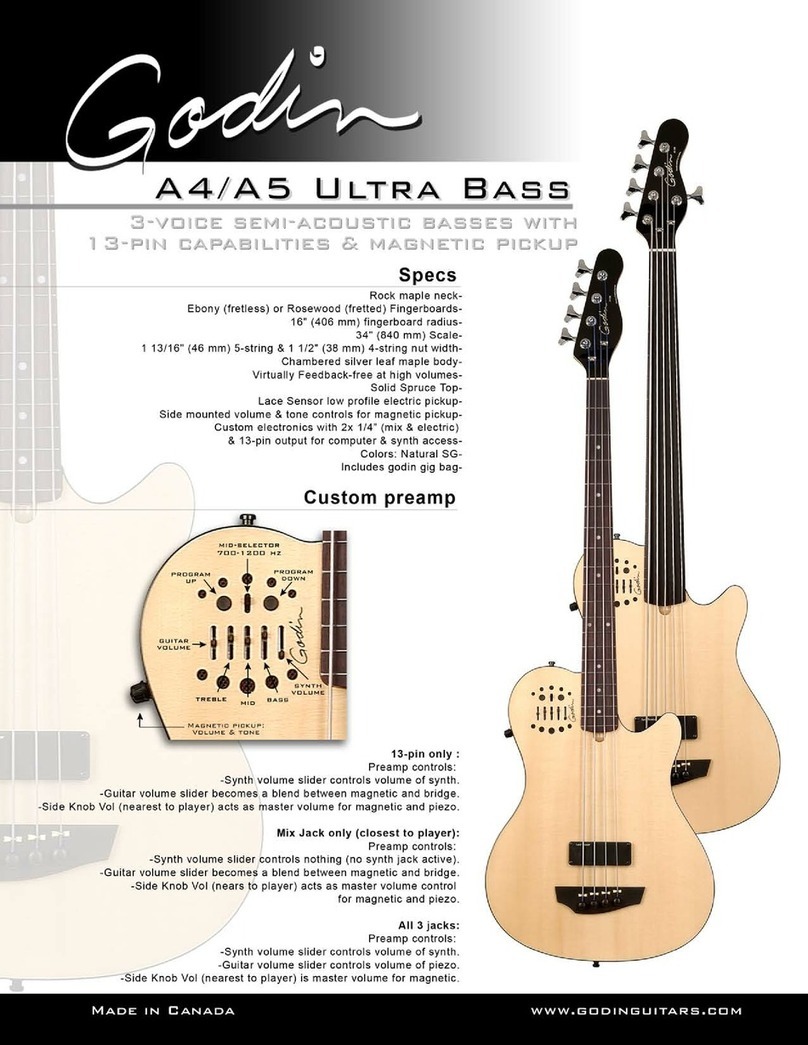
Godin
Godin A4 Ultra Bass Owner's manual

Godin
Godin Redline 1 User manual
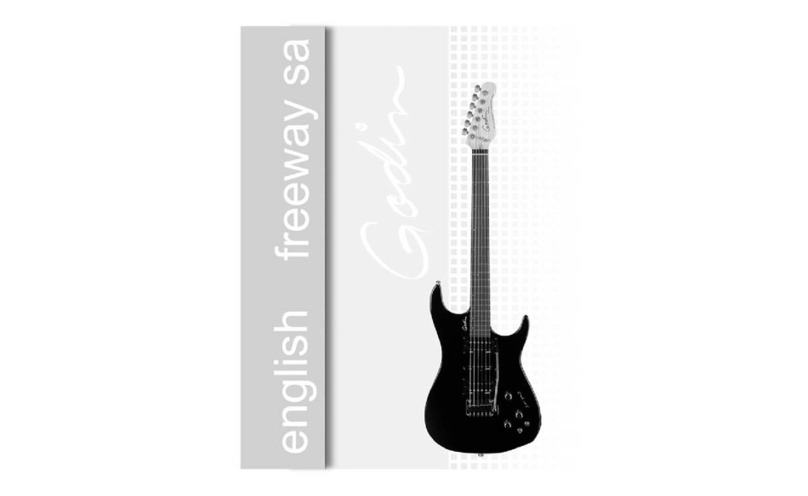
Godin
Godin Freeway SA User manual
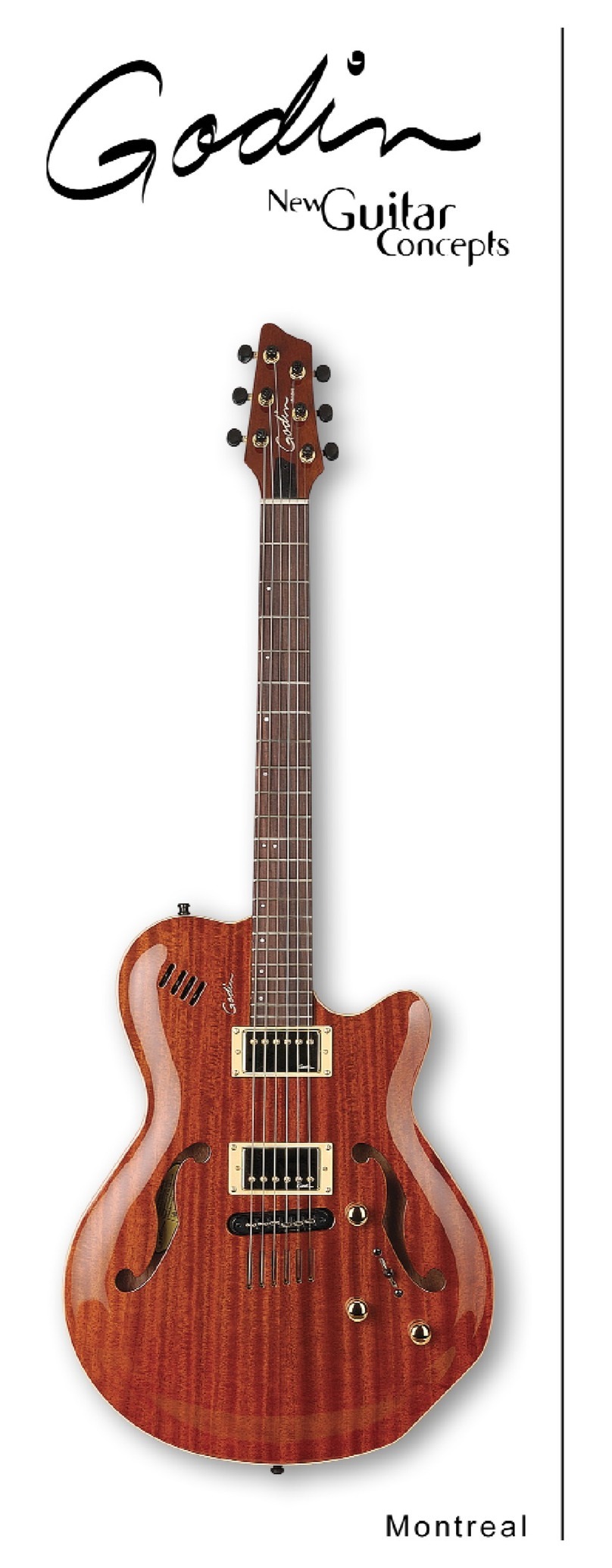
Godin
Godin Montreal User manual

Godin
Godin Velocity Manual
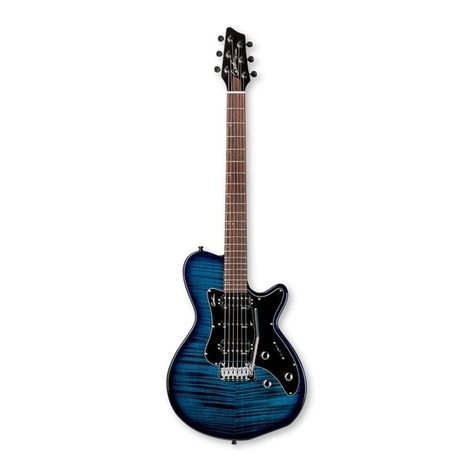
Godin
Godin Solidac User manual
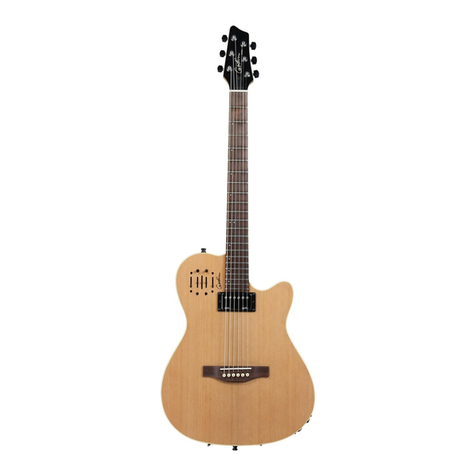
Godin
Godin A6 Ultra User manual
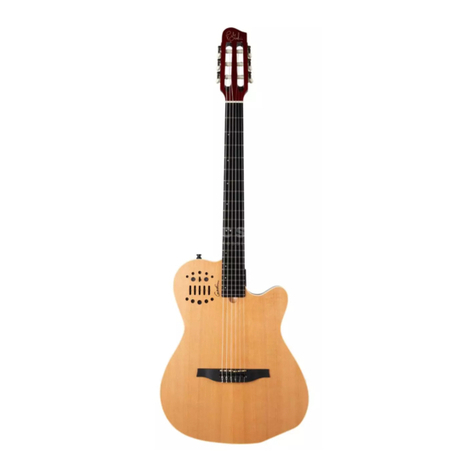
Godin
Godin ACS-SA Slim User manual
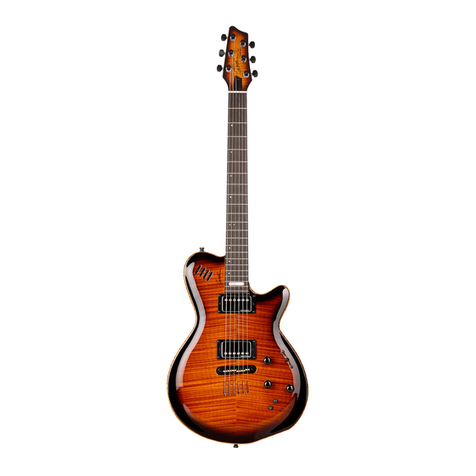
Godin
Godin LGX-SA User manual
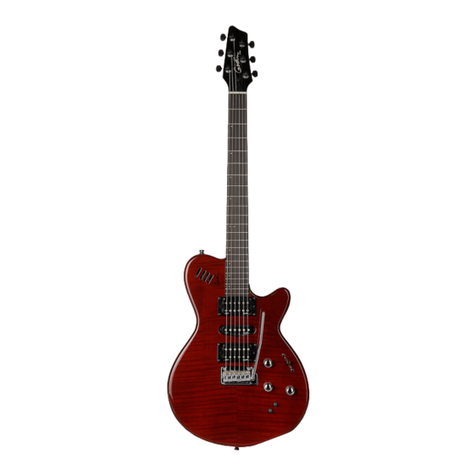
Godin
Godin XTSA User manual
